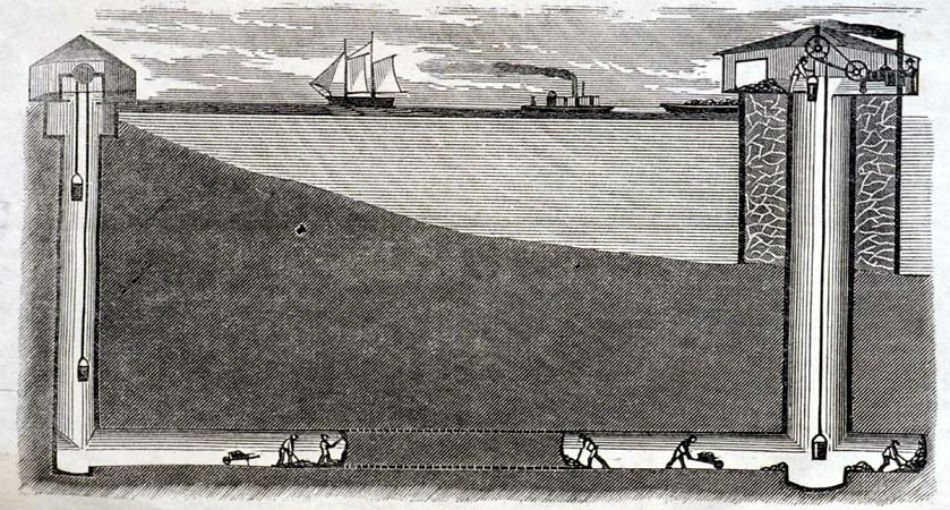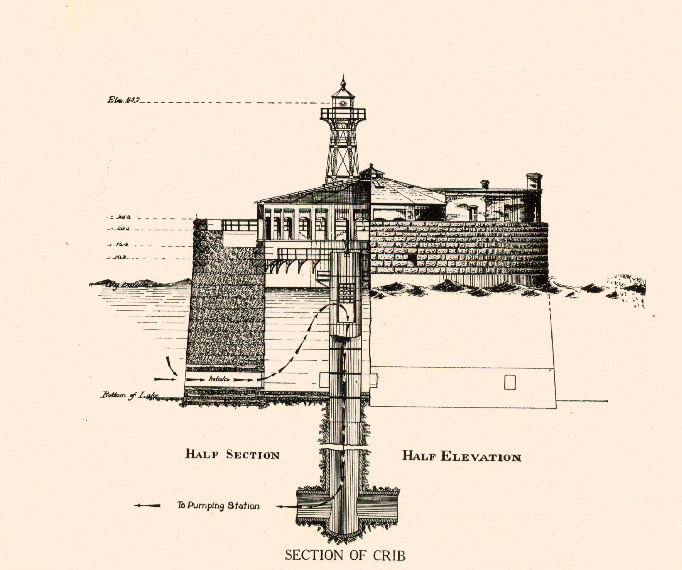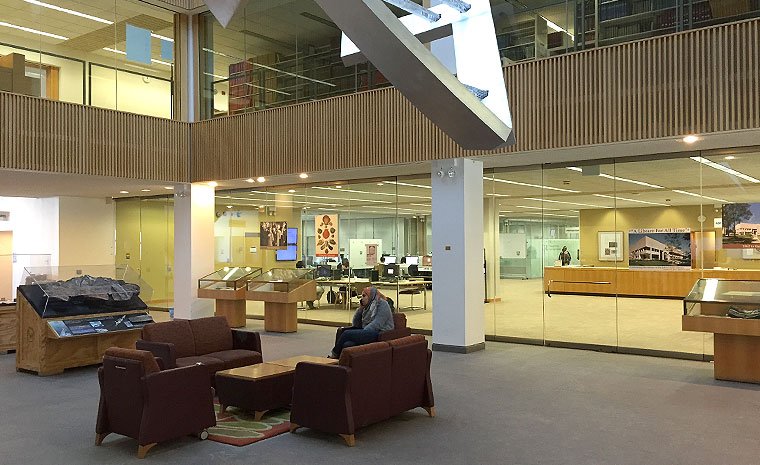Chicago's Water Tunnels
Water intakes just offshore proved inadequate soon after their construction in the 1850s, as the river carried raw sewage into Lake Michigan. Engineer Ellis Chesbrough, who designed the city's sewer system, proposed a tunnel two miles long to a new water intake further out in the lake.
Beginning in 1864, a crew tunneled from the shore, joined later by another crew tunneling from the intake crib in the lake. Two shifts a day mined by hand the clay and occasional gravel deposits, with the spoil carried away by small mule-drawn railcars. A third shift of masons lined the five-foot-diameter tunnel with two layers of brick. The two tunnels met in November 1866, less than seven inches out of alignment.
This tunnel supplied water to the new Chicago Avenue pumping station and water tower. By 1874, a second tunnel was dug to the same intake crib, and a diagonal tunnel under the city delivered water to a pumping station near Cermak and Ashland. Today the city has 65 miles of water supply tunnels, including several lake tunnels extending as much as four miles underwater.
Lake Michigan Tunnels
Chicago's growth during the 1850's and 60's had put a strain on the fresh water system, which collected water from Lake Michigan near the shoreline. Pollution in the Chicago River and near the shore frequently made the water unsafe. The solution was to intake water further offshore through a system of cribs that connected to the water supply via tunnels under the lake. The first tunnel was completed in 1867, connecting to an intake crib two miles offshore to the pumping station at Chicago and Michigan Avenues.

Chicago Water System. Chicago, IL: Department of Water & Sewers. Crerar TD225.C5A6 1954
This report, produced in 1954, describes the development of the water and sewer systems of the City of Chicago.

Ericson, John. The Water Supply System of Chicago. Crerar TD225.C5A6 1924
This report surveys the Chicago water system in 1924, and gives a background on the digging of lake tunnels and water supply tunnels. The pamphlet was produced in response to "Requests constantly being received ... for descriptive matters of the Water Works System ... both in this City and elsewhere."
